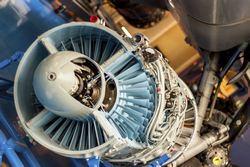Advanced testing of aircraft insulation materials
Aircraft components are subject to in-service damage from a variety of threats, including impact, chemicals, high temperatures and ultraviolet light. To calculate the probability of failure (represented by knock-down factor (KDF)), empirical data is collected from numerous experiments. Currently, KDFs are determined individually for each threat rather than in combination, increasing the number of tests and simultaneously cost and time. In addition, such procedures do not adequately represent real in-flight conditions. EU-funded scientists working on the QUALIFY(opens in new window) (Qualification of insulation materials to engine oils) project developed an innovative test set-up to address these issues. It enables simultaneous exposure of insulation materials to thermal and cyclic mechanical loading as well as aggressive engine oils and temperature changes. The technology allows quantifying global interactions of parameters to realistically predict failure in manufactured parts. In turn, better understanding of materials and component behaviours should foster development of lighter, higher-performance parts for important reductions in fuel consumption and emissions. Thermoplastic organic polymers were used as insulation materials, offering excellent mechanical properties, enhanced resistance to temperature and good chemical resistance. Thermoplastic materials without fibre reinforcement demonstrated better fatigue behaviour than fibre-reinforced materials. Engine oils for conditioning of specimens were taken from those in service for two years and in good condition. The team also designed the test set-up to enable testing of two specimens simultaneously in different environments. One specimen was immersed in oil at a high temperature and the other was exposed at room temperature. Project results were widely disseminated to end users within the aircraft industry, including manufacturers, suppliers, industrial bodies and related associations. They are expected to be instrumental in the development of new standards of qualification during manufacturing. The novel testing methodologies were also included in the portfolio of services offered by one of the world's testing, inspection and certification leaders. Finally, partners shared results with materials and components manufacturers in the plastics and composites industries. Improved testing procedures should decrease production costs and time to market while enhancing product quality. Better design of aircraft components for lower weight and higher performance will also help reduce the environmental impact of flight.



